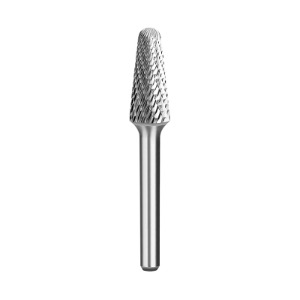Thermal Stability of Carbide Rotary Burs at Elevated Temperatures
Carbide Rotary Burs are widely known for their good hardness and wear resistance, but their performance under high-temperature conditions is where they truly stand out. Tungsten carbide, the primary material used in these burs, has a melting point of approximately 2,870°C and retains its structural integrity even when exposed to intense friction-induced heat during grinding, milling, or deburring. Unlike high-speed steel tools, which can soften and lose effectiveness at temperatures above 600°C, they maintain sharpness and cutting efficiency, reducing the need for cooling cycles or tool replacements.

Maintaining Structural Integrity at High RPMs
Industrial applications often involve tools rotating at speeds exceeding 20,000 RPM. At such high speeds, weaker tools tend to deform, vibrate excessively, or even fracture due to centrifugal forces. Carbide Rotary Burs, however, are engineered with a high modulus of elasticity and good tensile strength, allowing them to withstand these demanding speeds without compromising their balance or durability. This characteristic ensures that the burs maintain consistent cutting action, which is especially critical when working on hardened materials like stainless steel, cast iron, or titanium alloys.
Reduced Tool Wear and Extended Service Life
Operating at high temperatures and high rotational speeds inevitably accelerates tool wear for most cutting instruments. They are an exception to this rule. Their unique composition resists oxidation and thermal cracking, two common causes of tool degradation. Furthermore, advanced manufacturing techniques—such as precise brazing and uniform flute grinding—enable Carbide Rotary Burs to distribute heat evenly across their surface, thereby avoiding localized overheating. This allows them to retain their cutting geometry for significantly longer than comparable tools made from high-speed steel or coated composites.
Efficiency in Dry and Semi-Dry Machining Environments
One of the major advantages of using Carbide Rotary Burs is their ability to operate efficiently without constant lubrication. In dry or semi-dry machining conditions where coolant access is limited or undesirable, these burs still perform exceptionally well. The carbide material’s low thermal expansion coefficient ensures that even under high-speed friction, dimensional stability is preserved. This makes them ideal for applications in aerospace, die making, and medical device manufacturing, where clean, dry cuts are often required to avoid contamination or part distortion.
Consistent Performance Across Varied Materials
Whether used on ferrous metals, non-ferrous metals, or even advanced composites, they demonstrate consistent performance under high-stress conditions. Their cutting edges do not chip or dull quickly, even when subjected to repetitive passes at high speed. This versatility allows manufacturers to streamline operations by using the same set of burs across multiple materials, without needing frequent tool changes or recalibration, resulting in higher overall efficiency and reduced downtime.
A Reliable Tool for Demanding Conditions
Carbide Rotary Burs have earned their reputation as a go-to solution for high-speed, high-temperature machining tasks. Their ability to perform consistently under thermal stress, maintain structural stability at high RPMs, and resist wear over extended use makes them indispensable in modern manufacturing. Whether in aerospace, automotive, or precision engineering, Carbide Rotary Burs continue to provide reliability and performance where other tools fail. For operations requiring durability, precision, and thermal resistance, Carbide Rotary Burs remain a trusted and efficient choice.